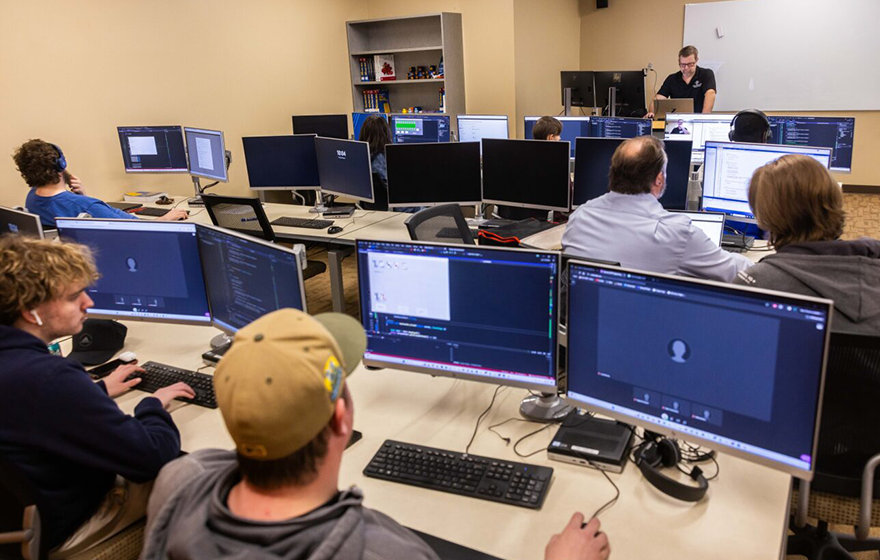Committed Developers vs. In-House Teams: Which Is Right for You?
The decision in between utilizing specialized programmers and maintaining an internal group is a significant one that can impact the trajectory of your tasks and total business technique. Alternatively, in-house groups add to a natural company culture and a nuanced understanding of long-lasting objectives.
Understanding Committed Designers
The expanding demand for specialized skills in the tech market has actually resulted in the appearance of specialized designers as a sensible service for several companies. These specialists are commonly acquired on a project basis, allowing firms to take advantage of specific know-how without the long-lasting dedication related to permanent hires. Committed developers are frequently embedded within a client's team, giving adaptability and scalability to fulfill task demands.
This version enables organizations to access a global talent pool, which is particularly advantageous in a swiftly developing technical landscape. Dedicated programmers can be sourced from numerous geographical areas, guaranteeing that business can discover the best ability at affordable rates. They typically bring a riches of experience and knowledge, having actually worked with varied jobs across various sectors.
Additionally, specialized programmers can concentrate solely on the tasks handy, enhancing performance and performance. They are geared up to integrate flawlessly into existing process, teaming up carefully with internal groups to accomplish project purposes. This technique not only reduces the concern of recruitment and training however additionally enables companies to stay dexterous, adapting quickly to altering market needs and technical advancements.
Benefits of In-House Teams

In addition, in-house groups tend to have a deeper understanding of the business's mission, values, and objectives. This alignment can boost employee involvement and motivation, as staff member feel extra connected to their job and the company's success. In addition, having a specialized in-house group permits much better placement of objectives and methods, as these participants are regularly concentrated on the firm's priorities.
In-house teams also assist in quicker decision-making procedures, as they can respond extra rapidly to modifications and obstacles. The well established partnerships and knowledge with business procedures enable structured operations and reduced miscommunication. Eventually, the combination of a cohesive culture, positioning with organizational goals, and reliable communication makes in-house teams a useful possession for many organizations, especially those looking to cultivate long-lasting growth and advancement.
Expense Considerations
When assessing expense considerations, both in-house groups and devoted designers present distinct economic effects for companies. Involving specialized developers normally entails a pay-per-project or per hour rate model, which can be cost-effective for businesses try this with fluctuating job needs. This method allows for versatility in scaling resources up or down, ensuring that companies only spend for the services they need.
In contrast, internal groups involve dealt with expenses, including wages, advantages, and overhead costs such as office room and tools. While this design uses higher control and immediate accessibility of resources, it may bring about higher lasting expenditures, especially if the workload does not validate a full-time personnel.
Moreover, companies need to think about the surprise prices connected with recruitment and training of internal workers, which can even more strain budgets. Sometimes, the time and resources invested in managing an in-house group can interfere with the organization's core service objectives.

Task Management and Flexibility
Job management and flexibility are essential elements that influence the choice in between specialized programmers and in-house teams. Committed programmers generally provide a high degree of versatility, permitting companies to scale sources up or down based on project needs. This agility can be especially useful for businesses experiencing varying workloads or those seeking to introduce swiftly. Committed teams commonly have actually developed procedures for managing projects efficiently, leveraging details methodologies like Agile or Scrum, which help with repetitive progress and versatility.

Inevitably, the choice in between internal groups and devoted developers rests on the preferred degree of versatility and the specific task administration requirements. Firms have to examine their operational dynamics, job complexity, and source accessibility to determine which choice lines up best with their calculated objectives.
Making the Right Choice
Picking the ideal advancement method-- in-house groups or dedicated developers-- needs a mindful evaluation of numerous factors that straighten with a company's strategic goals. On the other hand, internal groups can provide better connection and assimilation with existing personnel.
Next, review your budget plan. Committed programmers often offer an economical remedy for temporary tasks, while internal teams might sustain higher lasting expenditures because of incomes, benefits, and overhead costs. Analyze the level of control and collaboration desired; in-house groups commonly foster stronger interaction and placement with business society.
Furthermore, think about the time frame. If prompt outcomes are essential, committed programmers can be onboarded quickly, whereas building an in-house group takes some time for recruitment and training. Finally, evaluate the lasting vision of your organization. If continuous growth is essential, spending in an internal group might generate better returns over time. Ultimately, the decision rests on an extensive analysis of these factors, making certain alignment with your company's operational demands and general objectives.
Final Thought
In final thought, the choice in between specialized designers and internal groups hinges on job demands and organizational purposes. Alternatively, internal groups grow a cohesive culture and much deeper placement with lasting objectives.
The choice between making use of committed programmers and keeping an internal group is a significant one that can influence the trajectory of your jobs and general service method.Project administration and versatility are vital aspects that affect the option between in-house teams and devoted Recommended Reading designers. dedicated development team.In comparison, internal teams might succeed in preserving a regular project management structure due to their experience with the organization's society and long-lasting goals. Committed programmers frequently present a cost-effective remedy for temporary projects, while in-house teams may sustain higher lasting costs due to incomes, benefits, and overhead prices.In conclusion, the decision in between devoted programmers and internal teams hinges on project needs and organizational purposes